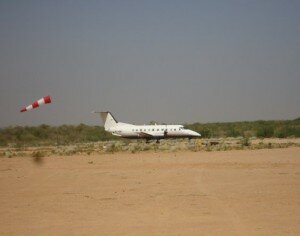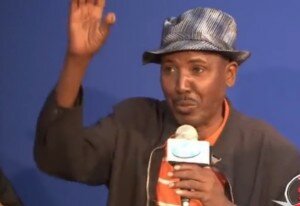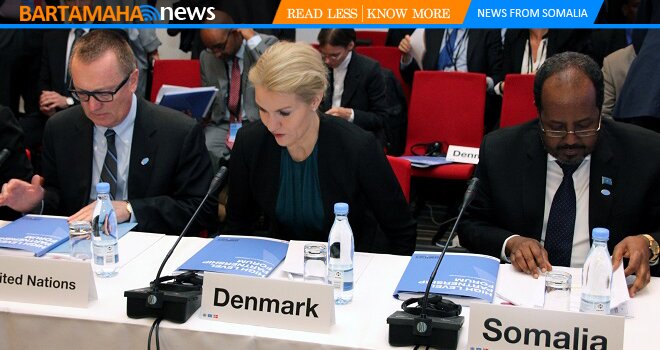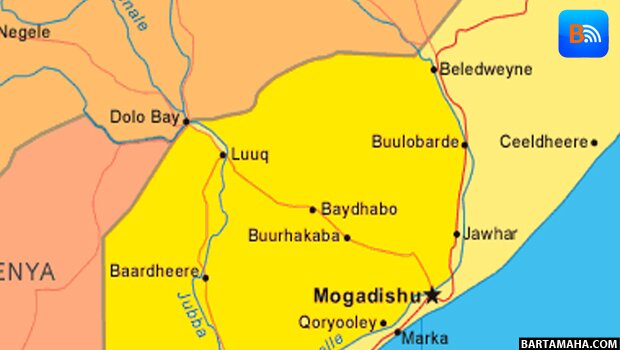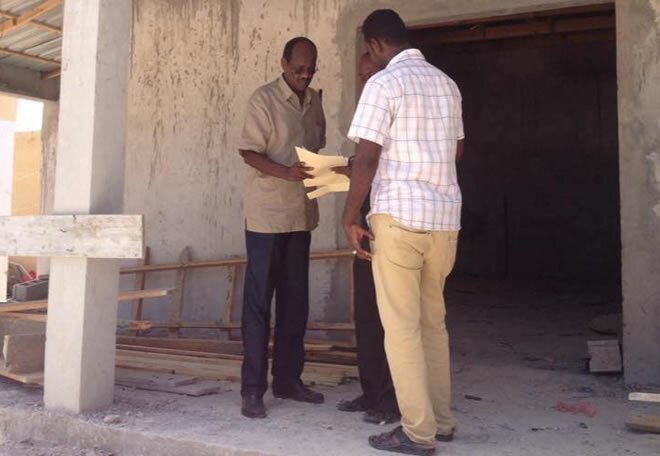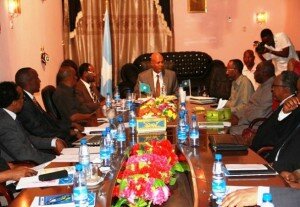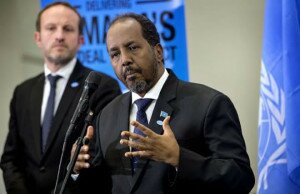Somali clerics take up arms against extremists
 THE battle for the Somali capital of Mogadishu has entered its second day.
THE battle for the Somali capital of Mogadishu has entered its second day.
Witnesses say three were killed and 30 wounded in clashes between government forces and Muslim insurgents who have taken control of key neighbourhoods in recent weeks.
A human rights group says more than 50 have been killed and more than 180 wounded.
In the battered central Somalia town of Dusa Marreb Sufi clerics, with their imams being murdered, are now doing what many other men have chosen to do in anarchic Somalia: they have picked up guns to fight back against the Shabab, one of the most fearsome extremist Muslim groups in Africa.
“Clan wars, political wars; we were always careful to stay out of those,” said Sheik Omar Mohamed Farah, a Sufi leader. “But this time, it was religious.”
In the past few months, a new axis of conflict has opened up in Somalia, essentially a nation without a central government and ripped apart by rival clans since the ouster of president Mohamed Siad Barre in 1991.
Now, in a definitive shift, fighters from different clans are forming alliances and battling one another along religious lines, with deeply devout men on both sides charging into fire-fights with checkered head scarves and assault rifles.
It is a Muslim-versus-Muslim war, and the Sufi scholars are part of a broader moderate Islamist movement that Western nations are counting on to repel Somalia’s increasingly powerful extremists. Whether Somalia becomes a terrorist incubator and a genuine regional threat — which is already beginning to happen, as hundreds of heavily armed foreign jihadists flock here to fight for the Shabab — or whether this country finally steadies itself and ends the years of hunger, misery and bloodshed may hinge on who wins these battles in the next few months.
If Mogadishu falls, Somalia will be dragged deeper into the violent morass.
But out on the windswept plains of Somalia’s central region, the moderates are holding their own and the newly minted Sufi militia is about the only local group to go toe-to-toe with the Shabab and
The several-hundred-square-kilometre patch of central Somalia that the Sufis control is not nearly as strategic as Mogadishu. But the Sufis have achieved what the transitional government has not: grassroots support, which explains how they were able to move so quickly from being a bunch of men who had never squeezed a trigger — a rarity in Somalia — to being a cohesive fighting force backed by local clans.
“We see the Sufis as part of us,” said Elmi Hersi Arab, an elder in Dusa Marreb. “They grew up here.”
According to aid agencies, two weeks of fierce clashes have displaced 46,000 people from Mogadishu, a city ravaged by 18 years of almost uninterrupted civil conflict and emptied of hundreds of thousands of residents by the violent fighting that erupted in the Horn of Africa nation following Ethiopia’s 2006 invasion.
- Jeffrey Gettleman
- May 24, 2009
Comments
comments
 Calendar
Calendar











